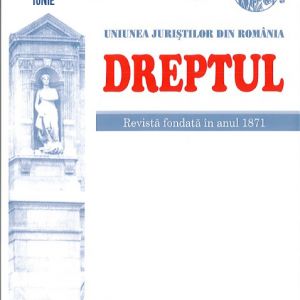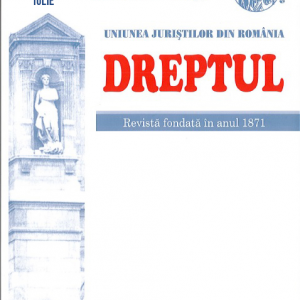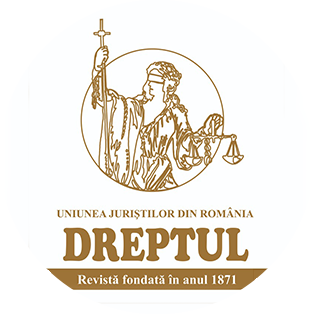-
 Over the past two years, following the amendment of the Labor Code by Law no. 40/2011, the passing of Law no. 62/2011 on social dialogue, as well as the New Civil Code of Procedure (Law no. 134/2010, which entered into force on February 15, 2013), successively amended (before its entry into force) significantly by Law no. 76/2012 for the implementation of the new Code of Civil Procedure (Law which, in turn, was amended by the Government Emergency Ordinances no. 44/2012 and no. 4/2013, and by Law no. 2/2013) and, finally, through the amendments brought by Law no. 192/2006 on mediation and organizing the mediation profession through the Government Emergency Ordinance no. 90/ 2012, and by Law no. 115/2012, (relatively large) changes in the settlement of labor disputes and labor jurisdiction matters have occurred. In this study, the authors examine the impact of such changes in the said areas.
Over the past two years, following the amendment of the Labor Code by Law no. 40/2011, the passing of Law no. 62/2011 on social dialogue, as well as the New Civil Code of Procedure (Law no. 134/2010, which entered into force on February 15, 2013), successively amended (before its entry into force) significantly by Law no. 76/2012 for the implementation of the new Code of Civil Procedure (Law which, in turn, was amended by the Government Emergency Ordinances no. 44/2012 and no. 4/2013, and by Law no. 2/2013) and, finally, through the amendments brought by Law no. 192/2006 on mediation and organizing the mediation profession through the Government Emergency Ordinance no. 90/ 2012, and by Law no. 115/2012, (relatively large) changes in the settlement of labor disputes and labor jurisdiction matters have occurred. In this study, the authors examine the impact of such changes in the said areas. -
 The study focuses on the analysis of the norms that regulate the subjects and the object of the protection of the topographies of the semiconductor products from the perspective of the Law no. 16/1995 with the further modifications and of the respective regulations from the Civil Code (Law no. 287/2009). The author reveals some aspects that were incoherently or ambiguously regulated as regards the approached topic and highlights the absence from the content of the special law (Law no. 16/1995) of some provisions misplaced in the Norms of application of this law. At the same time, in order to avoid the confusions in the analyzed case, the author formulates de lege ferenda proposals, in the view of eliminating the identified legislative imperfections.
The study focuses on the analysis of the norms that regulate the subjects and the object of the protection of the topographies of the semiconductor products from the perspective of the Law no. 16/1995 with the further modifications and of the respective regulations from the Civil Code (Law no. 287/2009). The author reveals some aspects that were incoherently or ambiguously regulated as regards the approached topic and highlights the absence from the content of the special law (Law no. 16/1995) of some provisions misplaced in the Norms of application of this law. At the same time, in order to avoid the confusions in the analyzed case, the author formulates de lege ferenda proposals, in the view of eliminating the identified legislative imperfections. -
 The author of this study proposes a theme as original as it is actual: the environmental criminology. This subject – as the author points out – is still at the stage of structuring the object and searching its own path of asserting. Included in the specialization trend at the criminology scientific-academic, strategic and intervention level, it is considered a “special criminology” alongside with the social, demographic, cross-cultural criminology, and other types of criminology whose object of study and research are the relationships between the environmental conditions and antisocial behavior in general, and the criminal offense in particular. Both the approach of schools (e.g., the Chicago School) and currents underpinning the creation of environmental criminology from a diachronic perspective of the subject, and the approach of the differences between the concept of environmental criminology and other related concepts raise reader’s interest.
The author of this study proposes a theme as original as it is actual: the environmental criminology. This subject – as the author points out – is still at the stage of structuring the object and searching its own path of asserting. Included in the specialization trend at the criminology scientific-academic, strategic and intervention level, it is considered a “special criminology” alongside with the social, demographic, cross-cultural criminology, and other types of criminology whose object of study and research are the relationships between the environmental conditions and antisocial behavior in general, and the criminal offense in particular. Both the approach of schools (e.g., the Chicago School) and currents underpinning the creation of environmental criminology from a diachronic perspective of the subject, and the approach of the differences between the concept of environmental criminology and other related concepts raise reader’s interest. -
 Transmiterea actului administrativ sancționator prin fax îndeplinește, în principiu, rigorile procedurale referitoare la comunicare, aceasta putând fi circumscrisã modalitãții la care se referã art. 86 alin. (3) teza finalã din Codul de procedurã civilã: „alte mijloace ce asigurã transmiterea textului actului și confirmarea primirii acestuia”.
Transmiterea actului administrativ sancționator prin fax îndeplinește, în principiu, rigorile procedurale referitoare la comunicare, aceasta putând fi circumscrisã modalitãții la care se referã art. 86 alin. (3) teza finalã din Codul de procedurã civilã: „alte mijloace ce asigurã transmiterea textului actului și confirmarea primirii acestuia”. -
 This study begins with on overview of the regulations covering unjust enrichment in French law and the Romanian civil law under the former Civil Code, retaining the fact that its existence as an autonomous source of obligations was, however, recognized and established the Praetorian way. The central part of the study deals with the analysis of the legal regime of unjust enrichment, arising from the express provisions and general rules accounting for relevant general rules under the new Civil Code (Articles 1345-1348); thus, there are set out and debated the conditions of existence of this source of obligations and the admissibility of the action de in rem verso. The author’s approach continues with addressing the unjust enrichment effects and the specific rules applicable to restitutions on this basis. Eventually, it is argued that this autonomous source of obligations is theoretically and philosophically based upon the idea or the principle of fairness.
This study begins with on overview of the regulations covering unjust enrichment in French law and the Romanian civil law under the former Civil Code, retaining the fact that its existence as an autonomous source of obligations was, however, recognized and established the Praetorian way. The central part of the study deals with the analysis of the legal regime of unjust enrichment, arising from the express provisions and general rules accounting for relevant general rules under the new Civil Code (Articles 1345-1348); thus, there are set out and debated the conditions of existence of this source of obligations and the admissibility of the action de in rem verso. The author’s approach continues with addressing the unjust enrichment effects and the specific rules applicable to restitutions on this basis. Eventually, it is argued that this autonomous source of obligations is theoretically and philosophically based upon the idea or the principle of fairness. -
 The author explores, in the study hereunder, an unusual provision in the matter of arbitration proceedings and that relate, essentially, to putting forth arbitration awards which ascertain or establish real rights to courts or the notary public. This provision was reintroduced in the new Code of Civil Procedure and is aimed at obtaining a court order or an authentic notarial instrument. The aforesaid regulation is criticized by the author, grounded by the fact that it flagrantly transgresses the procedural provisions that assign to the arbitration award the same effects as a court order, it being at the same time mandatory. Additionally, the author notes the theoretical and practical difficulties arising from the procedural rules under review. In the author’s view, such a regulation tends to turn the notary public into a jurisdictional authority. The author concludes that a more rational regulation would be to exempt actions relating to real rights from the jurisdiction of the arbitral tribunal.
The author explores, in the study hereunder, an unusual provision in the matter of arbitration proceedings and that relate, essentially, to putting forth arbitration awards which ascertain or establish real rights to courts or the notary public. This provision was reintroduced in the new Code of Civil Procedure and is aimed at obtaining a court order or an authentic notarial instrument. The aforesaid regulation is criticized by the author, grounded by the fact that it flagrantly transgresses the procedural provisions that assign to the arbitration award the same effects as a court order, it being at the same time mandatory. Additionally, the author notes the theoretical and practical difficulties arising from the procedural rules under review. In the author’s view, such a regulation tends to turn the notary public into a jurisdictional authority. The author concludes that a more rational regulation would be to exempt actions relating to real rights from the jurisdiction of the arbitral tribunal. -
 Legal issues of the contribution of spouses’ joint property to company’s establishment, the legal regime of shares acquired as consideration for this contribution, as well as the impact of the (Romanian) Family Code (effective during the period February 1st, 1954 - September 30th, 2011) and the Companies’ Law No. 31/1990 generated lots of controversy in the Romanian doctrine and jurisprudence between 1990 and 2011. With the enactment of the new Civil Code (Law No. 133/2009, republished, effective since October 1st, 2011) some of these controversies have been fully clarified. However, a good portion of them still exist today, generating further such debates and controversies. Such being the case, through this extensive study, the author examines, globally, the current legal regime of spouses’ joint property upon its impact with the Law No. 31/1990, examining, therefore, a series of questionable and controversial issues arising from the interference of legal regulations on the spouses’ joint property in light of the Romanian new Civil Code with the provisions of the Companies’ Law No. 31/1990, ultimately advancing several de lege ferenda proposals, for the settlement of all controversies arising from the impact of the two laws in question (the new Civil Code and Law No. 31/1990).
Legal issues of the contribution of spouses’ joint property to company’s establishment, the legal regime of shares acquired as consideration for this contribution, as well as the impact of the (Romanian) Family Code (effective during the period February 1st, 1954 - September 30th, 2011) and the Companies’ Law No. 31/1990 generated lots of controversy in the Romanian doctrine and jurisprudence between 1990 and 2011. With the enactment of the new Civil Code (Law No. 133/2009, republished, effective since October 1st, 2011) some of these controversies have been fully clarified. However, a good portion of them still exist today, generating further such debates and controversies. Such being the case, through this extensive study, the author examines, globally, the current legal regime of spouses’ joint property upon its impact with the Law No. 31/1990, examining, therefore, a series of questionable and controversial issues arising from the interference of legal regulations on the spouses’ joint property in light of the Romanian new Civil Code with the provisions of the Companies’ Law No. 31/1990, ultimately advancing several de lege ferenda proposals, for the settlement of all controversies arising from the impact of the two laws in question (the new Civil Code and Law No. 31/1990). -
 In the study hereunder, the author, making a thorough analysis of Article 1856 under the new Romanian Civil Code, infers that, although the marginal name of this text is called “the direct action of workers” (who have entered into an agreement with the works contractor), which would create the impression that only these may bring such action, in reality, active procedural legitimation to take the legal action in question also has the legal person acting as a subcontractor, and not only the individual workers who have contracted with the contractor.
In the study hereunder, the author, making a thorough analysis of Article 1856 under the new Romanian Civil Code, infers that, although the marginal name of this text is called “the direct action of workers” (who have entered into an agreement with the works contractor), which would create the impression that only these may bring such action, in reality, active procedural legitimation to take the legal action in question also has the legal person acting as a subcontractor, and not only the individual workers who have contracted with the contractor. -
 After the entry into force of the Civil Code (Law No. 287/2009 republished) on October 1st, 2011, which repealed the Family Code, and the corresponding amendment of Law No. 119/1996 concerning civil status acts, republished, the author examines in this study the legal provisions relating to the dissolution of marriage through divorce by administrative and notary procedure governed by Articles 375-378 of the new Romanian Civil Code.
After the entry into force of the Civil Code (Law No. 287/2009 republished) on October 1st, 2011, which repealed the Family Code, and the corresponding amendment of Law No. 119/1996 concerning civil status acts, republished, the author examines in this study the legal provisions relating to the dissolution of marriage through divorce by administrative and notary procedure governed by Articles 375-378 of the new Romanian Civil Code. -
 The choice made by the Romanian pouvoir constituant in 1991 in favour of the European model of constitutional review does not seem to have been followed by legal terminology. Most probably in order not to break with a tradition that still enjoys good reputation among legal scholars and practitioners, the label of „exception of unconstitutionality” has been preferred to the one of „preliminary reference”. This apparently minor semantic detail managed to have a lasting impact on the admissibility of this procedure to the point where the very legal institution has been completely transfigured: from a preliminary question it has become a defensive procedural tool.
The choice made by the Romanian pouvoir constituant in 1991 in favour of the European model of constitutional review does not seem to have been followed by legal terminology. Most probably in order not to break with a tradition that still enjoys good reputation among legal scholars and practitioners, the label of „exception of unconstitutionality” has been preferred to the one of „preliminary reference”. This apparently minor semantic detail managed to have a lasting impact on the admissibility of this procedure to the point where the very legal institution has been completely transfigured: from a preliminary question it has become a defensive procedural tool. -
 In the study hereunder, the author makes some considerations regarding the patrimonial liability of public law legal entities for their offence of issuing injurious administrative instruments. In this regard, it is concluded that the identification of public law legal entities is essential, since only these may be liable against the prejudiced creditor, the public authorities issuing the injurious administrative instrument lacking legal personality cannot being patrimonialy held liable against the prejudiced person. As for the legal nature of liability, this is a special subjective liability (if the administrative instrument is illegal) and, respectively, unbiased liability, if the instrument causing prejudices was issued through an illegal administrative instrument.
In the study hereunder, the author makes some considerations regarding the patrimonial liability of public law legal entities for their offence of issuing injurious administrative instruments. In this regard, it is concluded that the identification of public law legal entities is essential, since only these may be liable against the prejudiced creditor, the public authorities issuing the injurious administrative instrument lacking legal personality cannot being patrimonialy held liable against the prejudiced person. As for the legal nature of liability, this is a special subjective liability (if the administrative instrument is illegal) and, respectively, unbiased liability, if the instrument causing prejudices was issued through an illegal administrative instrument. -
 The author analyses the regulation of the legal relationship emerged from the creation of a topography of semiconductor product, both from the viewpoint of compliance with the norms of legislative technique and from the perspective of the shades of interpretation of the legal norms in the respective space. The study systematizes the issue of the moral and patrimonial rights of the limits of making use of these rights and of the specific obligations of the owners of the topographies of semiconductor products. There should be noted the multiple de lege ferenda proposals meant to eliminate the chaotic image of settling the norms and to help at establishing a legal physiognomy that should induce rigour and balance in the field of the legal relationship emerged from the registration of the topographies of the semiconductor products.
The author analyses the regulation of the legal relationship emerged from the creation of a topography of semiconductor product, both from the viewpoint of compliance with the norms of legislative technique and from the perspective of the shades of interpretation of the legal norms in the respective space. The study systematizes the issue of the moral and patrimonial rights of the limits of making use of these rights and of the specific obligations of the owners of the topographies of semiconductor products. There should be noted the multiple de lege ferenda proposals meant to eliminate the chaotic image of settling the norms and to help at establishing a legal physiognomy that should induce rigour and balance in the field of the legal relationship emerged from the registration of the topographies of the semiconductor products.
